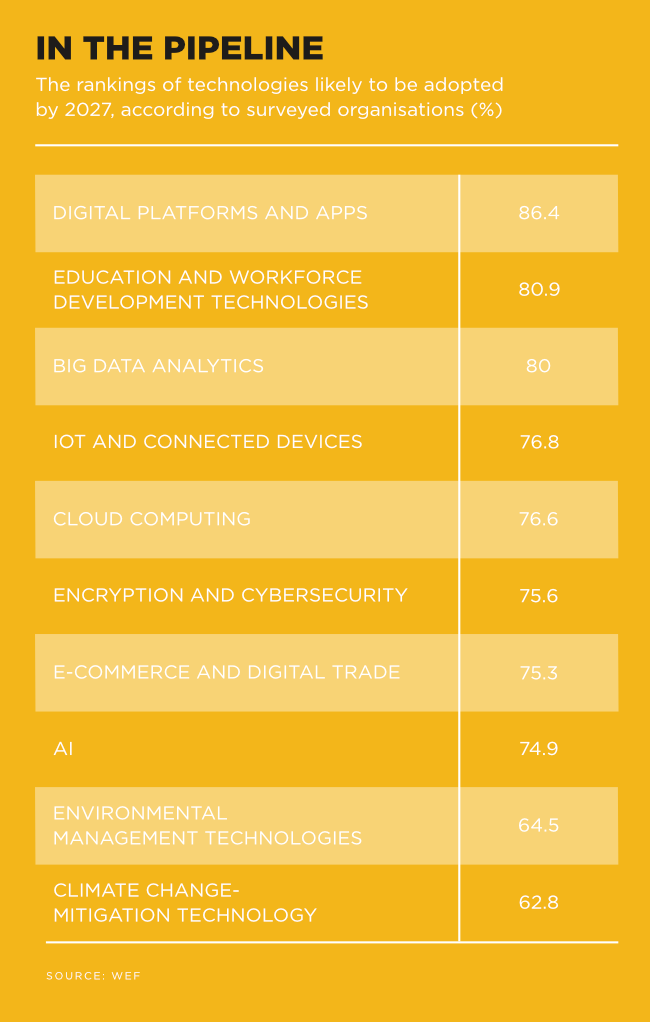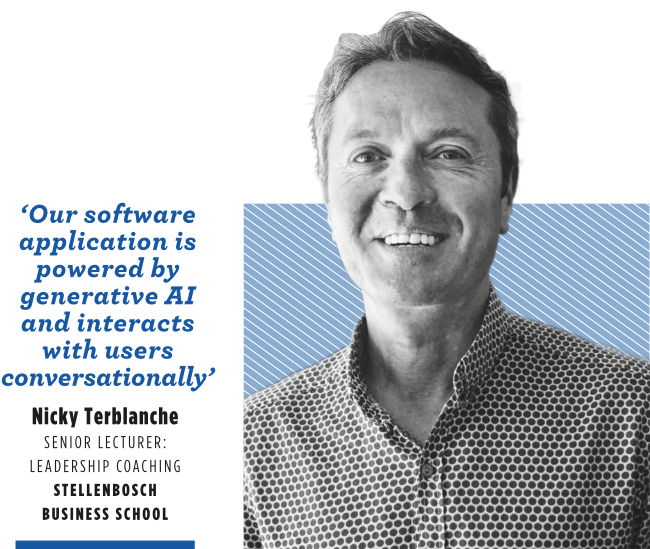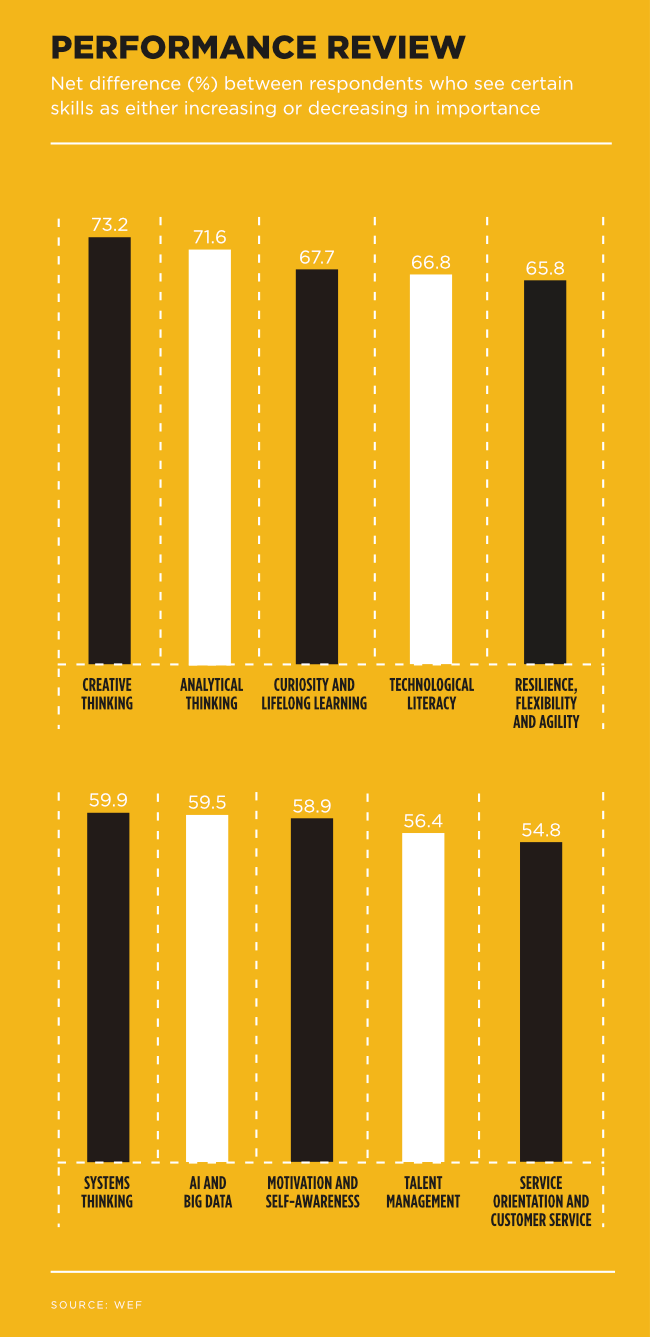A strange relationship is developing between AI and employees. Goldman Sachs warns that the robots are coming to take our jobs, replacing the equivalent of 300 million full-time posts by the time they’re done. Meanwhile, a Harvard Business School study found that AI can improve a worker’s performance by up to 40% compared with workers who don’t use it. But that’s only when the AI is used within the boundary of its capabilities; when the same AI is used outside those boundaries, worker performance drops by an average of 19 percentage points.
At the same time, researchers from Stanford University and the Massachusetts Institute of Technology found that customer service agents at a large firm worked 14% faster on average when they used an AI assistant. Again, though, there’s a caveat – the most skilled employees achieved no productivity gains at all from working with AI.
So AI makes workers better at their jobs, but not if they’re already good at their jobs, and only if AI sticks to what it was programmed to do.
Confused yet? Many managers are. As Mark Ralls, CEO of workforce analytics company ActivTrak, asks in a recent Forbes column, ‘is an employee who uses AI doing less work? Or are they now doing more work, better and faster? Does that mean you pay them less? Or more? How do you know if they’re using AI tools at all? What are the policies for when they do or don’t?’.
Much of the conversation so far about AI in the workplace has focused on the worker bees; on the jobs that will be automated into obsolescence, or – as Rall frames it – ‘clerical and other service functions, particularly those that involve responding to customer inquiries’.
Yet what about the higher pay grades? What about AI as a manager and motivator? Could it be that the robots aren’t coming to take jobs away but rather to help make sure that work gets done?
Researchers from Germany’s Kühne Logistics University believe that AI-supported business leadership is the next big step in the AI revolution. ‘Forget any romantic notions you have about leadership,’ write study authors Niels van Quaquebeke and Fabiola Gerpott. ‘AI will likely do an even better job than (average) leaders today do.’
They see AI first assisting human managers before ultimately substituting human leadership. ‘How effective an AI will be in its role as a true leader will be contingent on how deeply the AI used can understand the three basic psychological needs of its employees,’ they write. ‘Humans long for belonging, mastery and autonomy – because truly fantastic leaders are good at addressing these needs. But let’s be honest for a moment, how many truly fantastic bosses have you had across your career?
‘Many leaders are stressed out, overworked, inattentive, unwittingly unfair or simply not very empathetic. Future AI, with the ability to record and regard any important details, would be an advantage in many situations here.’
That notion of AI being more ‘human’ than humans is not as far-fetched as it once seemed. Jeremy Nunn, founder of Workmetrics, recently wrote (again, for Forbes) that ‘there is an entire segment of policies and procedures that can be upgraded with a language model that writes a human-like response. For some employees, these documents are incoherent and difficult to comprehend. ChatGPT and the like can simplify things through clear and concise instructions on how to follow company policies and procedures, as well as advice on how best to handle common situations that may arise within the confines of the workplace’.
In other words, AI can already explain workplace regulations in a more human-sounding way than the actual humans who wrote those regulations.
An SA-made chatbot called Coach Vici provides a model of how this might look. Developed by Nicky Terblanche, senior lecturer in leadership coaching at Stellenbosch Business School, the application combines proven coaching frameworks, models and tools with generative AI to provide natural, personalised coaching. Because it’s generative AI (or gen AI), it can create new outputs based on the vast volumes of data it’s been trained on. And because it’s a chatbot, it can do this at scale to thousands of users at once.
‘Our software application is powered by generative AI and interacts with users conversationally,’ according to Terblanche. ‘The bot is designed to assist and guide individuals or teams in various aspects, such as personal development, professional growth and business success, with real-time support, personalised coaching and data-driven insights.’
He claims that research shows Coach Vici to be ‘just as efficient as a human coach’ when it comes to achieving goals. ‘Coaching is not about giving answers,’ he says. ‘It is a support mechanism to help people find their own solutions. With our back-end reporting, we can intervene and help a person or groups to find the right solutions for specific problems.’ The app also tracks participants’ motivation levels over time, automatically raising alerts when intervention is required.
Research by McKinsey & Co highlights the benefits of gen AI to middle managers. ‘As their own direct reports learn to work with gen AI, middle managers may find themselves overseeing more and different kinds of work streams, moving at a pace never seen before,’ it notes. ‘At the same time, the use of gen AI can free up more capacity for middle managers so they can shift their attention to higher-value leadership tasks, such as strategy-focused work and people management.’
And, for that matter, knowledge transfer and mentorship. McKinsey’s research team play out the following scenario…
‘Imagine a marketing leader uses a gen AI application to write a creative brief that previously would have been developed by a more junior marketing associate,’ they write. ‘What will happen to the development and mentorship opportunities for both the leader and associate when the learning process is dis-intermediated by gen AI? What’s more, both the content and the delivery of skill-building programs will be affected.’
An AI chatbot, they argue, could guide those new employees through training on new technology – ‘at their own pace, on their own terms, allowing them to increase the extent and speed of their learning’.
Tiago Sottomayor, CTO at Portuguese-based employee engagement company Vaibe, takes it a step further, suggesting that businesses add gamification to the AI/training mix. ‘Gamification involves applying game elements, such as challenges, rewards, and competition, to everyday life contexts,’ he writes in a recent online post.
‘Specifically in the workplace, gamification can transform routine tasks into engaging experiences that capture employees’ attention and stimulate their motivation.’
And because game mechanics tap into individuals’ intrinsic motivations, the mix makes work more enjoyable and fulfilling. ‘AI technologies further enhance gamified experiences by personalising challenges, providing real-time feedback and adapting difficulty levels to individual skillsets,’ writes Sottomayor. ‘This combination creates a dynamic and interactive work environment that captivates employees’ attention and fosters their commitment to achieving goals.’
The prevailing narrative around AI, automation and machine learning tends to be around how these emerging technologies can make companies happy by cutting costs, and employees miserable by cutting jobs. However, that’s not the full story – certainly not when one considers the possibilities of using AI to manage, mentor and motivate the (human) workforce.
A new global study by Korn Ferry found that the biggest issue around AI isn’t so much that robots are taking all the jobs; it’s that there aren’t enough humans to do the work. The study predicts that by 2030 there will be a global human talent shortage of more than 85 million people, which could come at the cost of about $8.5 trillion in unrealised annual revenues.
‘Asking technology to do all the work and excluding people is a mistake,’ says Jean-Marc Laouchez, global MD of solutions for the Korn Ferry Hay Group. ‘In the future of work, leaders must recognise and capture the value of all their resources to succeed.’ That includes tech resources and human resources.











